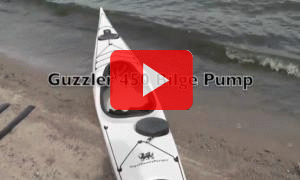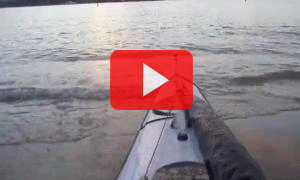Several of Bosworth’s Guzzler foot pumps are ideally suited for use as onboard bilge pumps in kayaks. Attached to the bulkhead, the pump remains securely with the kayak, so that you never have to worry about retrieving a lost pump from the water.
Each of the pumps recommended below is manufactured from rugged but lightweight Delrin plastic, and weighs less than 2 lbs. Designed for efficiency, these foot-operated Guzzlers can transfer a quart of water every 5 strokes. Equipped with a lightweight spring, they are easy to operate from a sitting position.
The video links below show how some of our customers have mounted these Guzzlers in their kayaks as well as what it’s like to operate them. Additionally, you can read the Sea Kayaker magazine article Foot Powered Bilge Pump , to see details of how one user installed a Guzzler in his kayak. Click on the pump models below to see the different styles we offer, to view recommended configurations and to order online.

Guzzler 0450D in NDK Kayak

Guzzler Kayak Bilge Pump at Work (Hybrid)
Have a Guzzler® video to share? Send us your product video and we’ll post it on this web page!
Just email us a Youtube or Vimeo link or the actual video to Videos@thebosworthco.com
How to install Guzzler Foot pump onto a kayak bulkhead.
Distinguishing the "400" from the "500" Guzzler pump
Different hose flanges available with Guzzler pumps
Installation instructions for Guzzler hand pumps
Replacing the diaphragm in Guzzler "400" and "500" hand pumps
Replacing duckbill valves in a Guzzler pump